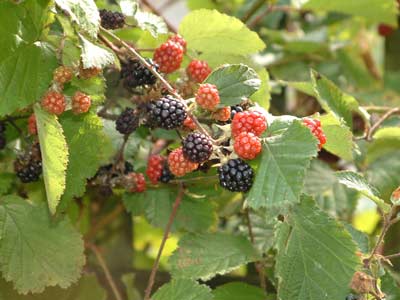
This can be a jelly made from wild blackberries or a mixture of blackberries and crab apples, the jelly being clear and containing no seeds.

A cooking apple with a strong, sour, sharp flavour, this is a large, often irregularly shaped apple, with creamy yellow, acid flesh and deep green skin sometimes flushed with reddish-brown. The flesh disintegrates quickly as it cooks, making it good for apple sauce but not for pies. Some enjoy the mushy purée it produces. It is a triploid, which means that it is a poor pollinator. The first tree was apparently grown from a pip planted by Mary Ann Brailsford some time between 1809 and 1815 in Southwell in Nottinghamshire. The first fruit was produced in 1837. Some years later a local nurseryman, Henry Merryweather, asked the then owner, Mr Bramley, a butcher, for permission to take cuttings. It was named, a little unfairly, after Mr Bramley. Apparently the tree was blown over in a storm early in the 1900s, but a branch emerged from the fallen wood and continues to produce fruit. It was awarded the Royal Horticultural Society First Class Certificate in 1883. Fruits of this late-season apple are picked from early October in South-East England is stored and is at its best from November to March.
Bran is the fibrous husk or outer layer of cereal grains separated during milling. Wheat bran is the most common one. The bran is removed by sifting. In wholemeal flours the bran is included. It is an important source of vitamin B and fibre.
Saxifrage. A leaf vegetable similar to lettuce which grows wild in rocky places along the East Coast of North America. It is used as a vegetable in the cuisine of the American South.